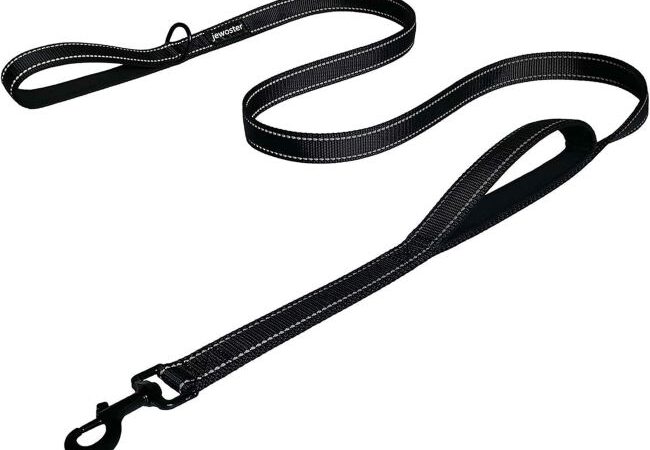Are Battle Ropes Noisy? Unraveling the Truth About Workouts
Battle ropes can produce noise, especially when they hit the ground during intense workouts. The level of noise largely depends on the exercise technique and the surface they’re used on.
Contents at a Glance
ToggleBattle ropes are dynamic training tools that can add an intense and enjoyable element to fitness routines. Offering a full-body workout, they are particularly effective for increasing muscular endurance, power, and cardiovascular conditioning. The ropes, when whipped, slammed, or waved, create a rhythmic motion that targets various muscle groups.
Since they can be used in both high-intensity interval training (HIIT) and steady-state cardio workouts, they are versatile and adaptable to different fitness levels. Despite their potential for noise, with proper technique and a suitable training environment, battle ropes can be incorporated into workout routines without causing significant disturbance.
The Battle Rope Buzz
Walk into any modern gym, and the rhythmic thuds of battle ropes might catch your ear. Often associated with high-intensity workouts, these heavy, durable ropes create a distinct sound that’s both motivating and a bit intimidating. But are battle ropes actually noisy? Let’s dive in and unravel the truth behind the battle rope buzz.
The Allure Of Battle Ropes
Why are fitness enthusiasts drawn to these thick, woven cords? The answer lies in their versatility and effectiveness. Here’s what makes battle ropes so appealing:
- Full-body workout: Engages multiple muscle groups.
- Cardio and strength: Boosts heart rate while building muscle.
- Fun and varied: Keeps exercise routines exciting.
Common Misconceptions
Despite their popularity, some myths about battle ropes persist. Let’s clear them up:
| Misconception | Reality |
|---|---|
| Battle ropes are too loud for home use | With proper technique, noise is minimal |
| They require a lot of space | Adjustable lengths fit different areas |
| Only for advanced athletes | Beginners can benefit too |
So, are battle ropes noisy? It depends on how you use them. With control and precision, you can keep the sound to a low hum, proving that you don’t have to cause a racket to have an effective workout.
Noise Factor
Are you wondering about the racket battle ropes make? Let’s dive into how much noise they really produce during workouts.
Sources Of Sound During Workouts
Battle ropes create sound when they hit the ground. The intensity of the workout affects the noise level. Let’s break down the sources:
- Whipping: Fast movements cause louder cracks.
- Slamming: Forceful throws generate heavy thuds.
- Dragging: Pulling ropes across the floor creates a shuffling noise.
Comparing Volume To Other Equipment
How do battle ropes stack up against other gym gear? See the comparison:
| Equipment | Noise Level |
|---|---|
| Battle Ropes | Moderate |
| Treadmill | High |
| Dumbbells | Low to Moderate |
| Rowing Machine | Moderate to High |
Battle ropes often have a lower noise impact than machines like treadmills.
Technique And Sound
Battle ropes are a dynamic tool for fitness enthusiasts. They offer a high-intensity workout that engages multiple muscle groups. Despite their benefits, some users worry about the noise. The sound of ropes slapping the floor can be loud. Yet, with the right technique, you can minimize the disturbance. Let’s dive into how proper form and common mistakes affect the noise level of battle rope workouts.
Proper Form For Quieter Sessions
Mastering the technique of battle ropes ensures a quieter session. Here are key points to remember:
- Stand with feet shoulder-width apart for stability.
- Keep your knees slightly bent to absorb the impact.
- Hold your core tight and maintain an upright posture.
- Grip the ropes firmly without excessive tension.
- Use controlled movements rather than wild swings.
- Wave the ropes smoothly to reduce impact on the floor.
Following these steps lowers the noise and enhances the workout.
Mistakes That Amplify Noise
Certain errors can make battle rope sessions noisier. Avoid these common mistakes:
| Mistake | Noise Impact | Tip |
|---|---|---|
| Slamming ropes hard | Increases volume | Use less force on the downswing. |
| Loose grip | Makes ropes hit floor unpredictably | Maintain a consistent grip. |
| Incorrect posture | Leads to erratic movements | Keep back straight and core engaged. |
| Overly wide stance | Causes excessive rope travel | Stand with feet shoulder-width apart. |
Steering clear of these errors reduces the sound battle ropes make. It also prevents strain and injury. Embrace the correct technique for a more effective and quieter workout.
Setting Matters
The right environment is crucial when using battle ropes. Not all spaces are suitable due to the noise they create.
Choosing The Right Environment
Selecting the perfect spot for your battle rope workouts is essential. Here are some points to consider:
- Look for soft surfaces: Grass or sand can absorb sound better than concrete.
- Indoor options: Gyms with soundproof areas or at home in a garage.
Ensuring the setting is appropriate will enhance your workout experience.
Impact On Surroundings
Battle ropes can be loud, affecting those around you. Here’s how:
| Environment | Impact |
|---|---|
| Home | Might disturb family members or neighbors. |
| Gym | Could interfere with other gym-goers’ focus. |
Choose a time and place where the noise will be least disruptive.
Design And Materials
When exploring the world of fitness equipment, battle ropes stand out for their simplicity and effectiveness. But one question often arises: Are battle ropes noisy? The answer lies in their design and materials. Different ropes can produce varying levels of sound during workouts. Understanding these elements can help in selecting the ideal rope for a quiet and effective training session.
How Construction Affects Noise
The construction of a battle rope significantly influences its noise output. Ropes with a tight weave tend to be denser, reducing the sound they make when striking the ground. Conversely, ropes with a loose weave may flap more loudly. The rope’s weight and diameter also play a role; heavier and thicker ropes might produce a deeper, less sharp noise compared to lighter ones.
- Dense weave: Less noise
- Loose weave: More noise
- Thicker diameter: Deeper sound
- Lightweight: Sharper noise
Selecting The Quietest Ropes
To ensure a low-noise workout, consider the following tips for selecting the quietest battle ropes:
- Opt for ropes with a poly dacron blend, known for durability and reduced noise.
- Choose ropes with a protective sleeve to minimize friction and sound on surfaces.
- Pick ropes that have a high-density construction, which typically results in quieter use.
Selecting the right rope can make your exercise both quiet and enjoyable. With the perfect blend of design and materials, you can focus on your workout without disturbing others.
Minimizing Disruption
Battle ropes are a dynamic tool to build strength and endurance. But, they can be loud. The sound of ropes slapping against the ground might disrupt others. This section focuses on Minimizing Disruption caused by battle ropes. With the right techniques and gear, you can keep the noise down.
Tips For Reducing Sound
Reducing battle rope noise is simple. Follow these tips:
- Choose the right surface: Soft surfaces absorb sound better.
- Adjust your technique: Use controlled movements to lessen impact.
- Limit high-impact exercises: Opt for movements that require less slamming.
Equipment And Accessories To Dampen Noise
Selecting the right equipment can make a big difference. Here’s what you need:
| Equipment/Accessory | Function |
|---|---|
| Rubber Mats | Place under ropes to absorb sound. |
| Soundproofing Foam | Attach to walls to reduce echo. |
| Soft Anchor Points | Wrap around anchor points to muffle noise. |
The Truth About Battle Rope Workouts
Discover the real scoop on battle ropes and their impact during workouts. Are they noisy? Do they deliver on the promises of extreme fitness benefits? Let’s dive deep into understanding this popular gym tool.
Cardio Vs. Strength Training Debate
Battle ropes challenge the idea that you need separate workouts for strength and cardio. They blend both elements effectively.
- Cardio: Consistent rope movements increase heart rate, enhancing cardiovascular health.
- Strength: The resistance of the ropes helps build muscle, particularly in the arms, shoulders, and core.
This dual approach ensures a comprehensive workout, making battle ropes a versatile tool in fitness routines.
Real Benefits And Limitations
Battle ropes offer numerous benefits but come with some limitations.
| Benefits | Limitations |
|---|---|
|
|
While they are effective for a full-body workout, understanding these limitations is crucial to maximizing the use of battle ropes.
Community And Culture
Battle ropes bring more than just physical benefits; they shape the community and culture in gyms. These tools create a unique bond among fitness enthusiasts. The sounds of ropes slapping the ground can be a call to action for many. Let’s dive into the experiences and the social aspects that accompany these noisy workouts.
User Experiences And Testimonials
- Increased motivation from the collective energy
- Shared challenges foster camaraderie
- Positive feedback boosts personal growth
Users often report a sense of accomplishment when they overcome the noise and intensity of battle rope exercises. Here are a few testimonials:
“The sound of the ropes hitting the floor pushes me to work harder. It’s like a heartbeat for the workout.” – Jane D.
“Battle ropes have transformed my routine and connected me with others who love the challenge.” – Mike S.
The Social Aspect Of Noisy Workouts
- Creates an energetic atmosphere
- Promotes healthy competition
- Leads to new friendships based on shared interests
The loud sound of battle ropes doesn’t just fill the room; it builds a community. Participants encourage each other, creating a vibrant social environment. This communal aspect can be a powerful motivator and a reason to return to the gym day after day.
Frequently Asked Questions
How To Make Battle Ropes Quiet?
Place a mat beneath the ropes to dampen noise. Use ropes on soft surfaces like grass. Opt for smaller diameter ropes for less sound. Ensure your movements are controlled. Practice during off-peak hours to minimize disturbance.
What Are The Cons Of Battle Ropes?
Battle ropes can be noisy, require significant space, induce muscle fatigue, and potentially exacerbate previous injuries. They also demand proper technique to avoid strain.
Are Battle Ropes Bad For Your Back?
Battle ropes, when used with proper technique, are not inherently bad for your back.
Should Battle Ropes Hit The Floor?
Yes, battle ropes should hit the floor during exercises like waves and slams for effective workouts.
Conclusion
Battle ropes can indeed generate noise, particularly if used on hard surfaces. Opting for padded floors or specific mats can help reduce this. For those keen on integrating battle ropes into their workouts, considering the setup and location is key to minimize disruption.
This ensures a vigorous yet considerate exercise routine. Embrace the challenge of battle ropes while being mindful of their impact.





